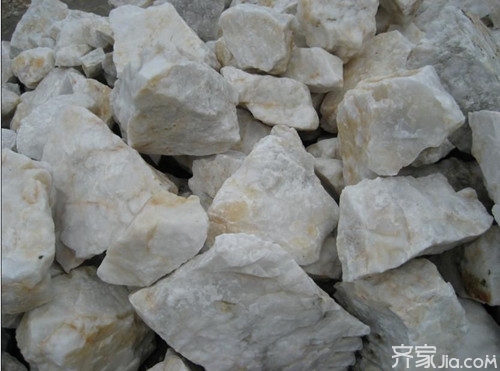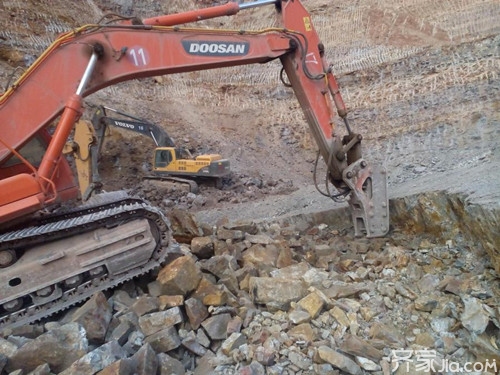In China, the country has vast territory and abundant resources, and minerals are abundant, especially mineral aluminum. China is the world leader in reserves of bauxite, and there are plenty of mineral reserves. Is there any happiness in such a resource-rich country? For aluminum ore, we usually do not know much about it. The following Xiaobian introduces aluminum ore hardness and other related knowledge.

What elements of aluminum ore
Bauxite is an ore with aluminum minerals as its main component and is classified into the following types of ore:
a) Water-bearing bauxite: mainly composed of diaspore (difficite) and boehmite (soft boehmite). The monohydrated bauxite can be further divided into a diasporite Minerals, monohydrated boehmite-a diaspore-aluminum bauxite and a boehmite monohydrate bauxite;
b) Sanshui bauxite: mainly composed of gibbsite;
c) Mixed bauxite: consists of a mixture of diaspore, boehmite and gibbsite. For example, gibbsite-water soft boehmite, boehmite-aluminum trihydrate 1. The bauxite mine and the less common diaspore - water boehmite - gibbsite bauxite and so on.
China has known that bauxite is dominated by diaspore, and there are also a small amount of trihydrate bauxite and mixed bauxite. When it comes to the elements, it can be divided into useful elements and other elements. Useful The most important element is certainly Al, sometimes associated with Fe, Ti, etc.; other elements are mainly Si, O, Ca, Mg, Na and so on.
Here are three major categories of aluminum ore:
1. Aluminum ore is divided into: boehmite. Also known as boehmite, boehmite, the structural formula is AlO (OH), molecular formula is Al2O3 · H2O. Orthorhombic system, crystallized well was diamond, prismatic, prismatic, acicular, fibrous and hexagonal plate. The boehmite is soluble in acid and alkali. The mineral is formed in an acidic medium and is mainly produced in the sediment of bauxite, which is characterized by the symbiosis with siderite.
2. Al ore is divided into: Dianhydroaluminum, also known as diaspore, structural formula and molecular formula are AlO (OH) and Al2O3 · H2O. Orthorhombic system, crystallized well was columnar, plate-like, scaly, acicular, prismatic and so on. Diaspore is soluble in acid and alkali, but it dissolves very weakly under normal temperature and pressure, and it must be decomposed completely under high temperature, high pressure and strong acid or alkali concentration.
3. Aluminum ore is also divided: gibbsite, also known as hydrated aluminous hydroxide, borohydrite, structural formula Al (OH), molecular formula Al2O3 · 3H2O. Monoclinic crystals, crystallized in perfect hexagonal plate, prismatic, often fine crystal aggregates or twin crystals, gibbsite in the ore is mostly irregular aggregates. Soluble in acid and alkali, the powder Heated to 100°C for 2 hours to completely dissolve. The mineral is formed in an acidic medium.

Aluminum ore hardness:
The main aluminum ore is diaspore, boehmite and gibbsite. These are aluminum ores. The industrial aluminum ore index is a boundary grade, the ratio of aluminum to silicon for pit mining and pit mining is 1.8 to 2.6, and Al2O3 to 40%; the minimum industrial grade, aluminum to silica ratio is 3.5, pit mining is 3.8, and Al2O3 is 55%. .
The gibbsite is also known as hydrated bauxite, borosilicate, structural formula Al(OH), molecular formula is Al2O3·3H2O. Monoclinic crystals, crystallized in perfect hexagonal plate-like, prismatic, often fine-grained aggregates or twin crystals, gibbsite in the ore is mostly irregular aggregates. Soluble in acid and alkali, the powder is heated to 100°C and completely dissolved in 2 hours. The mineral is formed in an acidic medium.
The boehmite monohydrate is also known as boehmite and boehmite. Its structural formula is AlO(OH) and its molecular formula is Al2O3·H2O. Orthorhombic system, crystallized well was diamond, prismatic, prismatic, acicular, fibrous and hexagonal plate. The boehmite is soluble in acid and alkali. The mineral is formed in an acidic medium and is mainly produced in the sediment of bauxite, which is characterized by the symbiosis with siderite.
The diaspore is also known as diaspore. Its structural formula and molecular formula are AlO(OH) and Al2O3·H2O, respectively. Orthorhombic system, crystallized well was columnar, plate-like, scaly, acicular, prismatic and so on. Diaspore is soluble in acid and alkali, but it dissolves very weakly under normal temperature and pressure, and it must be decomposed completely under high temperature, high pressure and strong acid or alkali concentration.
The ability of the resistance tool to invade the surface of the ore to characterize the index of the ease of fragmentation of the ore material. The internationally accepted method for measuring ore hardness is the Mohs standard mineral hardness comparison method; China also uses the Platts rock solidity coefficient f (commonly known as the rock mineral hardness coefficient) to characterize ore hardness.
The Proton rock ruggedness coefficient f was proposed and first adopted by the Russian scholar Prototyakovov in 1911. Used to characterize the ease of crushing and rock mass maintenance operations in various mining operations. Platts believes that regardless of the way to crush, the solidity exhibited by rock and rock tends to be consistent. The f-value is between 0 and 20, usually only represented by an integer, and is used only when f<2. Decimal representation. The f-value is initially determined by several methods such as the compressive strength of rock, rock drilling efficiency, single charge of gunpowder, and unitary consumption of cutting tools. However, due to certain methods and production levels related, later generations only use rock and rock compressive strength to determine the value of f, that is, f = R/100, where R is rock rock compressive strength (kgf/cm2), and approximately f =R'/10 indicates that R' is the rock compressive strength expressed in MPa. In fact, the rock solid is a fuzzy concept.
The Mohs hardness was raised in 1824 by Austrian Moss (F. Mohs). He used the hardness of ten standard minerals such as talc, gypsum, calcite, fluorite, apatite, orthoclase, quartz, topaz, corundum, and diamond from small to large to determine the hardness of the ore being tested. If the measured mineral can be characterized by a certain standard mineral, leaving marks on the surface, and can not be scratched by a lower standard mineral, the hardness of the ore material is between the two hardness scales. The hardness of ore materials can also be obtained from the weighted average of the hardness and content of their constituent minerals.

Xiao Bian summary: Through the introduction of the above content, I believe that my friends have a comprehensive understanding of the hardness of aluminum ore. Want to know more relevant knowledge, please continue to pay attention to Qi family information.
Jade translucent stone over the door stone Feng Shui
PGspin centrifuge,Centrifuge for dental industry,Centrifuge for Making PRF & CGF Clot,PRF and CGF Centrifuge
Topscien Instrument(Ningbo China)Co.,LTD , https://www.centrifugesupply.com
